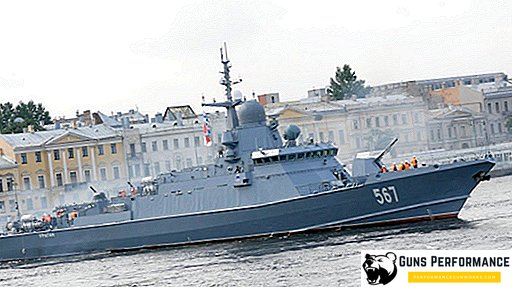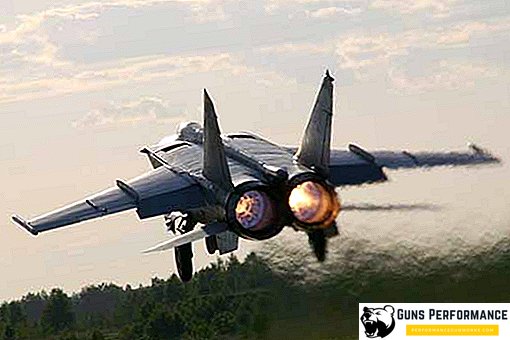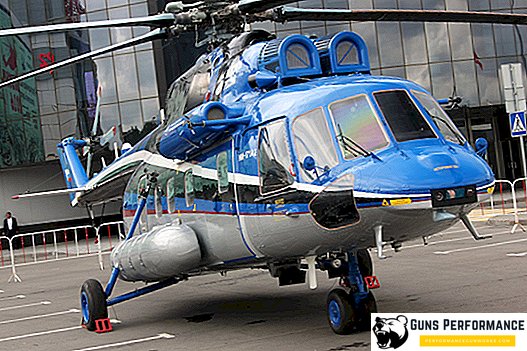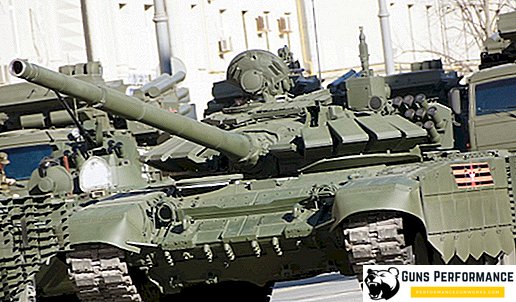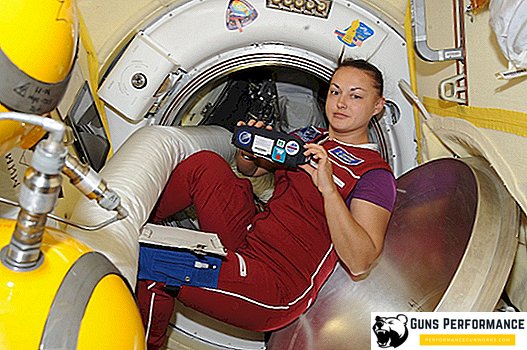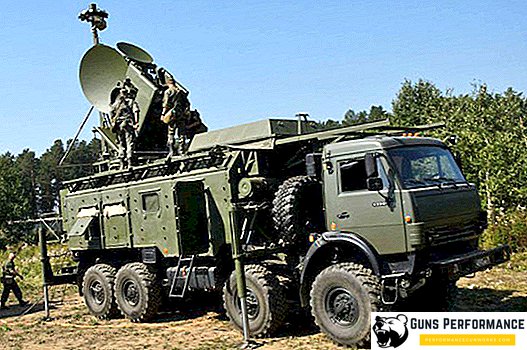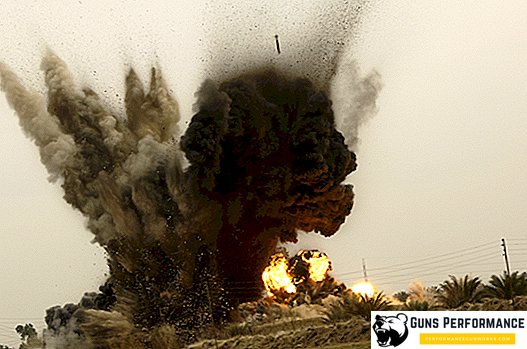The Dragunov sniper rifle (7.62 mm caliber) has been in service since 1963, and there are no plans to replace it with something else. Despite the fact that the SVD is already morally obsolete - yet it does an excellent job with its main tasks. Nevertheless, the talk that this rifle should be replaced with a new rifle system is heard more and more often.
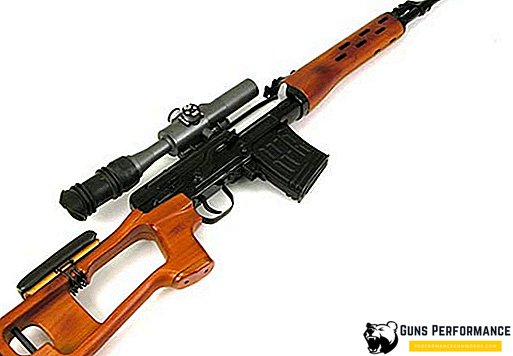
The Dragunov rifle is the second most common in the world after the clones of M24 rifles of the American Army. SVD is called legendary - and for good reason, because it will be recognized "on the fly": a unique profile, a characteristic sound of a shot and excellent technical characteristics. The legends of piercing power and rifle accuracy are generally innumerable. This rifle has a unique and interesting fate.
SVD history
The biography of this rifle starts from the 1950s. It was then that the mass rearmament of the Soviet army took place. The development of a new sniper rifle was entrusted to Evgeny Dragunov, the well-known creator of sporting firearms.

During the design of the sniper rifle, the Dragunov design team faced a lot of difficulties, mostly related to the gaps between the various parts of the rifle. It was necessary to ensure optimum density in order to achieve high accuracy. But large gaps also ensure good resistance of the weapon to pollution and other impacts. As a result, the designers came to a reasonable compromise.
Rifle design ended in 1962. Competition in this work was Dragunov A. Konstantinov, who developed his own sniper rifle. They started simultaneously and finished almost at the same time. Both models were subjected to various tests, but the victory was won by Dragunov’s weapon, which surpassed Konstantinov’s rifle both in accuracy and accuracy. In 1963, the SVD adopted.

The tasks that were set before the sniper rifle were quite specific. This is the destruction of sedentary, moving and stationary targets that may be in unarmored vehicles or partially hidden behind shelters. Self-loading design significantly increased the combat rate of fire weapons.
SVD shooting accuracy
The Dragunov sniper rifle has excellent technical characteristics, including very high accuracy for this type of weapon. For the most accurate combat, the optimal pitch of the rifling of the barrel is 320 mm. Until the 1970s, the rifle was produced with such barrels. With a sniper cartridge 7N1 accuracy of the battle was 1.04 MOA. This is better than that of many magazine rifles (a self-loading rifle, other things being equal, shoots a little less accurately than a non-self-loading rifle). For example, the M24 sniper rifle, adopted in service in the United States, when using a sniper cartridge shows the accuracy of 1.18 MOA.

But with a cutting pitch of 320 mm it is almost impossible to use cartridges with armor-piercing incendiary bullets - in flight they began to tumble and go past the target. In the 1970s, the rifle gave greater versatility, reducing the groove pitch to 240 mm. After that, the rifle was able to shoot any type of ammunition, but the accuracy was lower:
- up to 1.24 MOA - shooting with a 7H1 cartridge;
- up to 2.21 MOA - when firing with an LPS cartridge.
The Dragunov sniper rifle with a sniper cartridge can hit the following targets at the first shot:
- chest figure - 500 m;
- head - 300 m;
- waist figure - 600 m;
- running figure - 800 m.
The PSO-1 is designed to fire up to 1,200 meters, but at such a range you can only conduct a disturbing fire or only shoot at a group target effectively.

TTX rifles
- SVD caliber - 7.62 mm
- Initial speed of a bullet - 830 m / s
- Weapon length - 1225 mm
- Rate of fire - 30 shots / min
- Ammunition supply is provided by a box magazine (10 rounds)
- Chuck - 7.62 × 54 mm
- Weight with an optical sight and in the charged state - 4.55 kg
- Barrel length - 620 mm
- Rifling - 4, right direction
- Sighting range - 1300 m
- The effective range is 1300 m.
Design features
SVD is a self-loading rifle. Its automatics works on the principle of removal of powder gases from the barrel of a weapon when fired and locked the channel for 3 combat stops with the help of a shutter.
The weapon receives ammunition from a detachable box magazine, which holds 10 rounds of 7.62x54R.
Shooting from SVD can be carried out:
- rifle cartridges with ordinary tracer and armor-piercing incendiary bullets;
- sniper cartridges (7Н1, 7Н14);
- cartridges with expansive bullets brands JSP and JHP.

Quite often, the design of the SVD is compared with the design of the AKM, but despite the presence of similar elements, the Degtyarev rifle has characteristic features:
- the gas piston is not rigidly connected to the slide frame, which, when fired, reduces the total weight of the moving parts of the rifle;
- the barrel bore is locked to three lugs (one of which is a rammer) during the turn of the bolt;
- trigger mechanism of the SVD hammer type is assembled in one case;
- the rifle's fuse is controlled on the right side of the rifle by a fairly large lever. The fuse blocks the trigger in the on position, including limiting the movement of the slide frame to the rear, which provides protection during transportation from external contamination;
- Rifle flame arrester also performs the function of the muzzle brake-recoil compensator. The flame arrester has five slit slots;
- the butt and forearm of the weapon were made of plastic (formerly of wood);
- an unregulated cheek support is attached to the butt.

Sights
Especially for the SVD rifle in 1963, the optical sniper PSO-1 was developed. This is the main optical sight of the Soviet and Russian sniper weapons.
The design feature of the sight is a fairly successful aiming reticle, which allows the sniper to determine the distance, as well as take the necessary horizontal corrections along the course of the shooting, without rotating the flywheels. It provides fast aiming and shooting.
The sight is sealed, it is filled with nitrogen, which eliminates fogging of the optics when the temperature drops. It is completed with a carrying bag, light filters, a case, a power adapter, a power source and spare bulbs.

PSO-1 is designed for shooting at well-disguised and small-sized targets. Mounted on the dovetail mount. Highlighting the grid makes it possible to aim at dusk. It is possible to enter aiming angles based on the distance to the target, including lateral corrections (target movement, wind). PSO-1 is designed for firing up to 1300 meters.
In addition to an optical sight, the rifle can be installed night sights. When the optical sight fails, the shooter can perform the task with the help of standard sighting devices, consisting of an adjustable rear sight and front sight in the earpiece.

SIDS modification
In 1991, Izhevsk designers created the modernization of the SVD with a folding butt. SIDS, unlike SVD, has:
- an advanced flame arrester and vapor release unit;
- shorter stem;
- modified optical sight PSO-1M2.
The SVD was not always convenient when landing troops and when transporting in technology because of the great length. As a result, a more compact version of the rifle was developed, which did not lose the basic fighting qualities of its predecessor. This task was entrusted to the team under the leadership of A. I. Nesterov. As a result, the SIDS stock began to take shape on the right side of the receiver. When folding stock but there is no need to remove the optical (or night) sight. The SVDS rifle is equipped with an optical (PSO-1M2) and standard open sights.
Video about Dragunov rifle
SVDK modification
In 2006, a large-caliber sniper rifle, created byon the basis of SVDunder 9 mm cartridge. The weapon was designed specifically to defeat the enemy, who is behind the barrier, has protective equipment (body armor), as well as to defeat light equipment.
The SVDK rifle on the device is a further development of the SVD, but its main components were modernized and designed to use a more powerful cartridge:
- part of the rifle barrel was placed in a special casing;
- the folding metal butt and pistol grip were borrowed from the SIDS sniper rifle, but at the same time the area of the rubber butt plate was significantly increased due to stronger recoil during firing.
The SVDK rifle, in contrast to the SVD, does not provide for the possibility of attaching the bayonet. For better stability when shooting with a powerful 9 mm cartridge, the weapon is equipped with a bipod. The SVDK, like the SVD rifle, in addition to the special 1P70 “Hyperon” optical sight also has an open sight.


